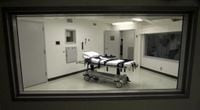On October 23, 2025, Alabama is scheduled to carry out the execution of Anthony Boyd, a death row inmate convicted for the 1993 murder of Gregory Huguley. The method set for Boyd’s execution—nitrogen hypoxia—has become a flashpoint for controversy, drawing sharp criticism from legal advocates, religious leaders, and those who have witnessed its effects firsthand. As the state prepares for its latest use of this experimental method, the debate over the ethics, legality, and humanity of nitrogen gas executions has reached a fever pitch.
Governor Kay Ivey announced Boyd’s execution date on August 18, 2025, in a letter to Alabama Corrections Commissioner John Hamm. The letter referenced an execution warrant from the state’s Supreme Court, specifying a window between October 23 and 24 for the execution to be carried out. While the official documents did not explicitly state the method, a spokesperson for Governor Ivey confirmed to reporters that nitrogen hypoxia would be used, according to details reported by KTSA.
Nitrogen hypoxia, a relatively new addition to the roster of execution methods in the United States, involves strapping an inmate into a chair and forcing them to breathe pure nitrogen gas through a mask, leading to death by asphyxiation. Alabama first adopted the method in 2018, after encountering increasing difficulty in obtaining lethal injection drugs and facing mounting public scrutiny over botched executions. At the time, all death row inmates were given the option to choose nitrogen hypoxia over the default method of lethal injection. Boyd was among the handful who elected for the untested procedure, despite not fully understanding its implications, as revealed in court records.
Alabama began implementing nitrogen hypoxia executions in early 2024. Since then, five inmates have been put to death using this method, with a sixth scheduled before Boyd’s execution in October. The state’s secrecy laws cloak many details of the protocol, but what is known has raised grave concerns among observers and advocates alike.
In a lawsuit filed against the state, Boyd’s attorneys argue that Alabama lacks “sufficient safeguards to prevent conscious suffocation from happening” during nitrogen hypoxia executions. They point to disturbing observations from previous executions, stating that each inmate “was observed to gasp for air and struggle against their harness for several minutes after the nitrogen would begin to flow” and “showed signs of conscious suffocation, terror, and pain.” The lawsuit proposes alternative methods—firing squad, hanging, or medical-aid-in-dying—arguing these would be less cruel and more constitutionally sound.
Alabama officials, for their part, have maintained that nitrogen hypoxia is humane. They insist that inmates lose consciousness quickly and do not experience pain that would rise to the level of cruel and unusual punishment as prohibited by the Constitution. Yet, the testimony of those who have witnessed these executions tells a different story.
On January 25, 2024, Kenneth Smith became one of the first inmates executed by nitrogen hypoxia in Alabama. A witness to Smith’s execution, writing for Patheos, described a harrowing scene: “They tied him down. I watched as the mask crushed onto his face. I heard the hiss. Then came the jerking. The gasping. The desperate fight for air.” The official narrative, the witness wrote, was that the execution was “quick,” “painless,” and “just.” But the reality, as described by someone who was present, was far grimmer: “What I saw was torture. What I saw was murder.”
The witness recounted Smith’s final moments in vivid detail: “I saw Kenneth Smith convulse. I saw his chest heave. I saw his body shake. I saw his face swell and contort. I saw the fluids build up inside the mask. I saw him fight for every single breath until his body couldn’t fight anymore. If that is ‘peaceful,’ then words no longer have meaning.” The account stands in stark contrast to the claims of state officials and has fueled calls for an end to nitrogen executions altogether.
Boyd’s legal team has echoed these concerns, arguing in court filings that the procedure amounts to torture and violates the Eighth Amendment’s ban on cruel and unusual punishment. Their lawsuit not only seeks to halt Boyd’s execution by nitrogen hypoxia but also pushes for alternatives that, while still capital punishment, are argued to be less likely to inflict prolonged suffering.
This debate is not confined to the legal arena. Religious leaders and activists have invoked moral and theological arguments against nitrogen hypoxia. The same Patheos witness, who has provided spiritual care to death row inmates, framed the issue in stark spiritual terms: “The breath in our lungs is the most basic marker of life… That first breath was not given by any court or politician. It was given by God. Every breath since has been holy. To take it away is not just killing. It is blasphemy.”
Alabama is currently the only state to have carried out executions using nitrogen hypoxia, though Louisiana has also used the method once. Arkansas, Mississippi, and Oklahoma have laws permitting nitrogen hypoxia but have not yet employed it. The method’s novelty and the secrecy surrounding its implementation have only intensified calls for transparency and reform.
As the scheduled execution dates for Geoffrey West (September 25, 2025) and Anthony Boyd (October 23, 2025) approach, the debate over nitrogen hypoxia shows no signs of abating. The Patheos witness, who plans to be present for Boyd’s execution, has pledged to “bear witness to what too many people want to ignore: executions are not sterile. They are not orderly. They are not civilized. They are raw, messy, violent acts of domination…and in this case, suffocation.”
The controversy over nitrogen hypoxia has also reignited broader questions about the death penalty in America. Critics argue that executions, regardless of method, are fundamentally at odds with basic human dignity and do little to heal the wounds of violence or deter future crimes. “Killing does not heal. Killing does not deter. Killing does not restore. Killing only kills,” the Patheos writer asserted, capturing the moral anguish felt by many opponents of capital punishment.
As Alabama presses forward with its planned executions, the state finds itself at the center of a national conversation about justice, mercy, and the limits of state power. Whether the legal challenges and public outcry will alter the course of Boyd’s fate remains to be seen. But one thing is clear: the debate over nitrogen hypoxia—and the death penalty itself—is far from settled, and the eyes of the nation are watching closely.
The coming months may well determine not only the fate of Anthony Boyd but also the future of execution methods in America. For those who have witnessed nitrogen hypoxia firsthand, the hope is that public awareness and legal scrutiny will finally bring an end to what they see as a cruel and inhumane practice. Until then, the struggle over life, death, and the meaning of justice continues in Alabama’s death chambers.


